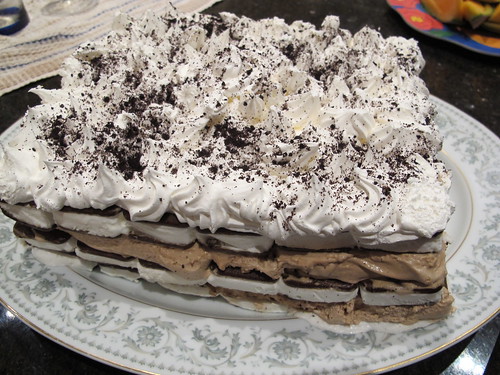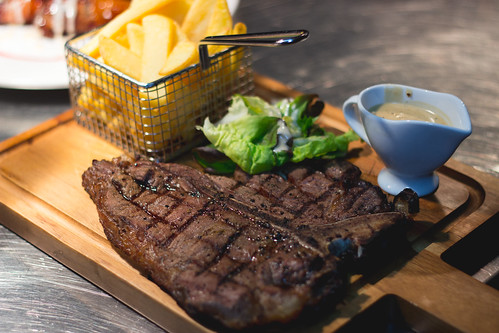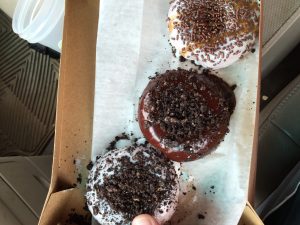Should “Cheat Meals” Have a Place In Your Diet?
Overview.
- Cheat meals consist of whatever foods of your preference, but certain guidelines should be followed to attain optimal performance and body composition goals.
- Cheat meals are recommended by many nutritionists and are often coupled with the “90/10 Rule”.
- Cheat meals are recommended for physiological reasons, including building muscle and improving recovery.
- Eating a cheat meal can be psychologically beneficial, especially when following strict nutritional guidelines.
- Follow four steps to get the most benefit out of your cheat meals.
What Is a Cheat Meal?
Q: “Hey Justin, I was wondering what you consider a cheat meal? Do you fit a cheat meal into your diet? When I have one cheat meal per week, I think I go a little overboard with the amount.”
There are many misconceptions about what a “cheat meal” actually is.
Let us first discuss what a cheat meal is NOT with the following examples:
-An Entire Large Pizza
-A Bottle of Whiskey
-Your Kid’s Birthday Cake
-Your Best Friend’s Wedding Cake
-The Refrigerator
-The Pantry
-Grandma
Takeaway: Do NOT binge.

A cheat meal is a meal consisting of whatever food you prefer. However, to attain optimal performance and body composition goals, the cheat meal should be an occasional, reasonable “treat” or meal.
Cheat meals are recommended by many nutritionists when dieting or following proper nutrition habits. (A common tactic suggested by many nutritionists to establish the amount of cheat meals to consume per week is called the “90/10 Rule”, which is explained later).
Why Have a Cheat Meal?
Consuming a cheat meal can provide physiological and psychological benefits for performance and body composition objectives.
Physiological
A cheat meal is recommended for physiological reasons, including building muscle and improving recovery.
Building Muscle
During and after a heavy, intense strength training or metabolic conditioning session, muscle fibers are damaged through a series of micro-tears, creating a catabolic environment, a state in which tissue is broken down.
To begin the restoration and rebuilding process for muscle tissue to become bigger and stronger, we must promote an anabolic environment.
To facilitate the transition from a catabolic state to an anabolic state, post-workout nutrition is of utmost importance largely due to the involvement of insulin.
Insulin is a hormone that helps shuttle nutrients into cells. Following a workout, insulin sensitivity is significantly increased. When consuming a post-workout meal, especially containing foods of a high-glycemic index (foods that quickly raise blood sugar), the increase in insulin sensitivity aids the influx of simple sugars and amino acids (constituents of protein) into damaged muscle cells to help create an anabolic environment.
However, a spike in insulin outside of the workout window can increase chances of the transfer of simple sugars to fat cells as opposed to muscle cells for repair and growth.
Recovery
Recovery is one of the most underrated aspects of training, but the ability to recover is essential for successful attainment of performance and body composition goals. Recovery is a high priority when training to yield maximal benefits for performance, body composition, and injury prevention.
The insulin response elicited from a post-workout meal facilitates transportation of simple sugars to damaged muscle cells to restore levels of muscle glycogen, the stored form of carbohydrates. The increased storage of muscle glycogen helps to maintain higher levels of energy throughout the day and to improve performance for the next training session.
Takeaway: Consume a high-glycemic, moderate-protein cheat meal to promote building muscle and facilitating recovery.
Psychological
Perhaps the clearest advantage, adding a cheat meal into your diet can be psychologically beneficial.
Dieting or following proper nutrition habits can be mentally exhausting, especially when adhering to strict nutritional guidelines. To break the monotony, having a slice of pizza or bowl of ice cream or a hamburger and fries will NOT ruin your diet.
Consuming an entire large pizza, six alcoholic beverages, and a large bucket of fries weekly will limit your progress.
As stated earlier, a cheat meal is NOT an excuse to binge. Consume a cheat meal that will satisfy your appetite, but avoid going overboard.
The more strategic you are in planning your cheat meals, the more control you posses over binges.
Four Steps to Highly-Effective Cheat Meals
So how do you go about having a cheat meal that will be advantageous to your performance and body composition goals?
The foundation to a successful nutrition or fitness program is preparation and strategy. Follow these four steps to get the most benefit from your cheat meals:
1. Refer to the list above of what to avoid (i.e. overindulgence) when planning your cheat meal and start brainstorming possible cheat meal ideas. Here are several examples to get you started:
- Ice Cream
- Sushi
- Pancakes
- Spaghetti and Meatballs
- Apple Pie
- Lean Steak and Potatoes
2. Follow what many nutritionists call the “90/10 Rule” to determine how many cheat meals throughout the week to consume.
With the 90/10 Rule, 90% of your intake consists of food that will build you toward successful attainment of your performance or body composition goals. The remaining 10% consists of whatever other foods you prefer.
Add the total amount of meals consumed throughout the entire week. Next, multiply the total number of meals by 0.10. The resulting number is your total amount of cheat meals per week.

3. Prepare to ideally consume your cheat meal within three hours after a heavy, intense strength training or metabolic conditioning session to help promote muscle growth and recovery.
4. Have fun. Going out to a restaurant or having friends and family over for dinner can be a rewarding way to “celebrate” your fitness and nutritional success throughout the week.
Following a nutritional program does not have to be boring or mentally exhausting. Implementing cheat meals effectively can provide physiological and psychological benefits leading to greater development, increased recovery, and helping to promote a more sustainable, healthy lifestyle.




Very helpful thanks Justin
‘Glad it was helpful, Los!
-J